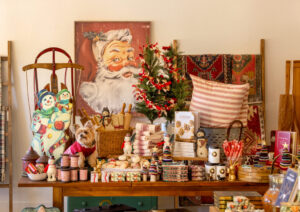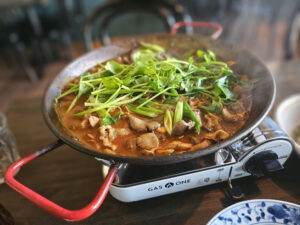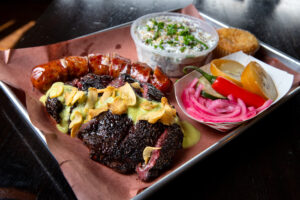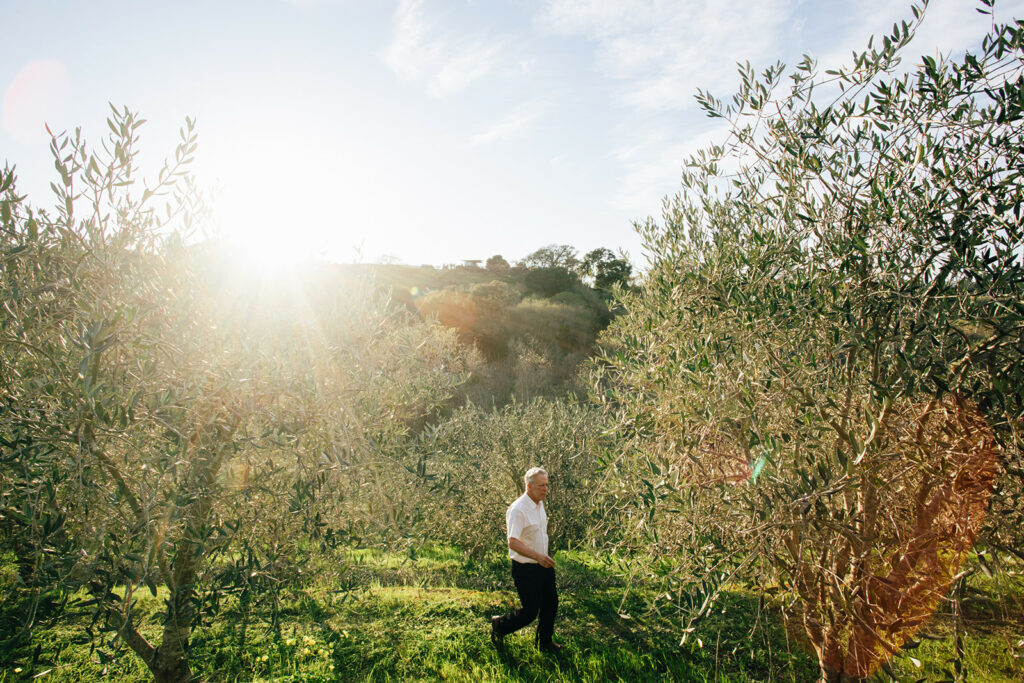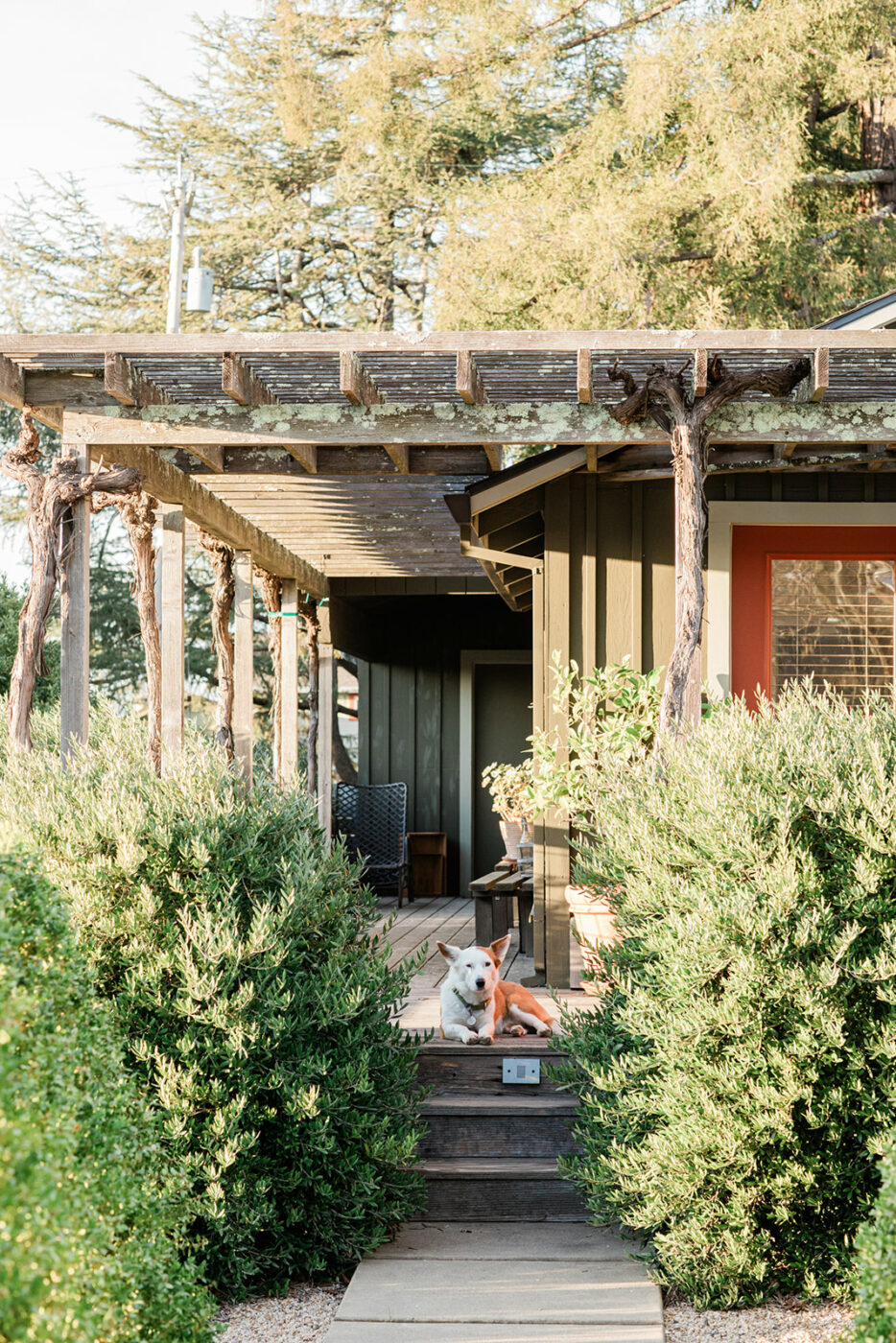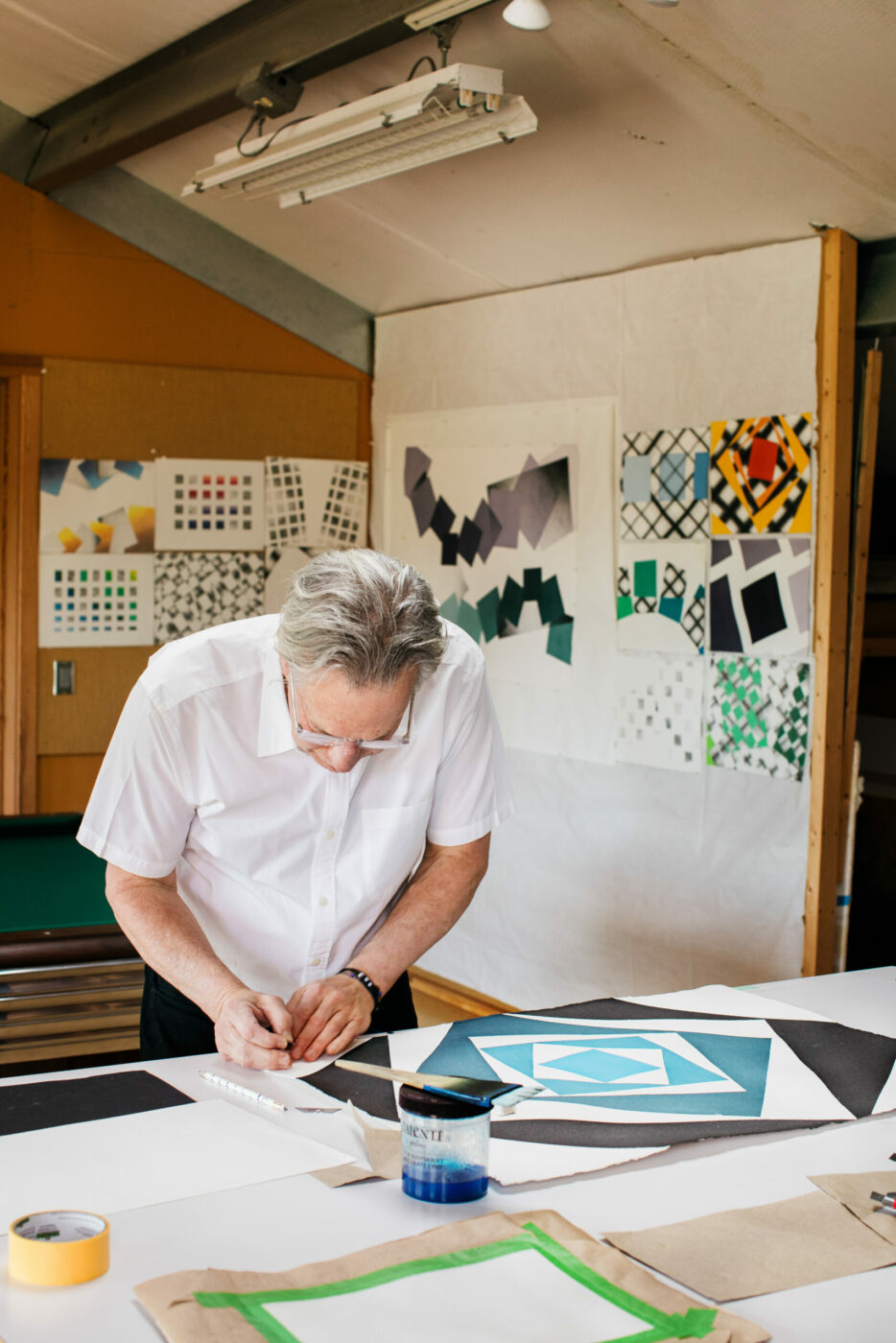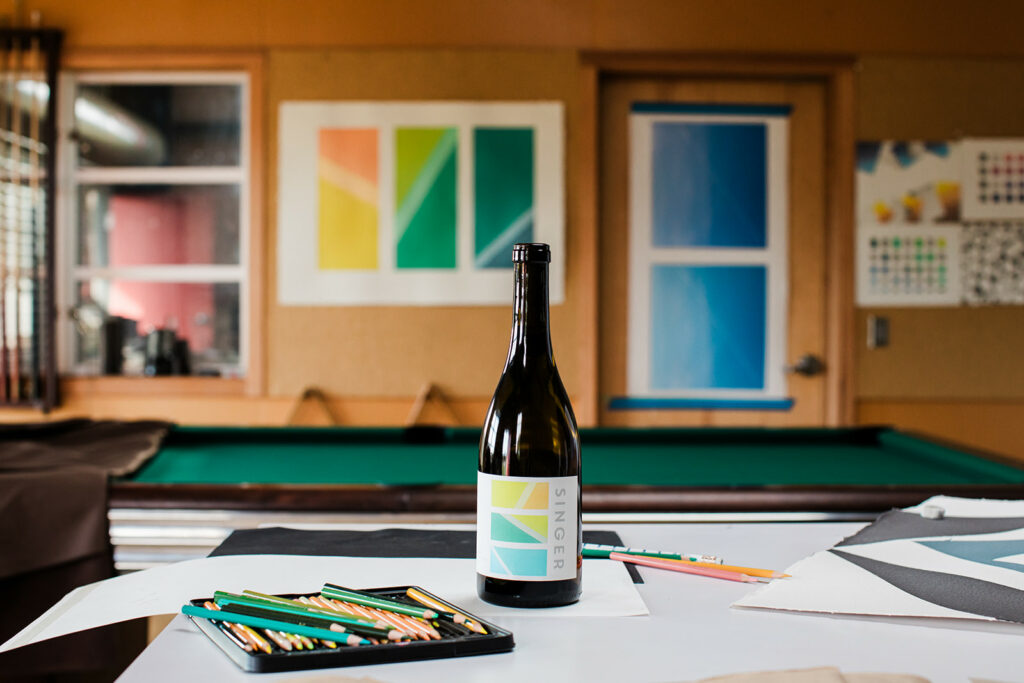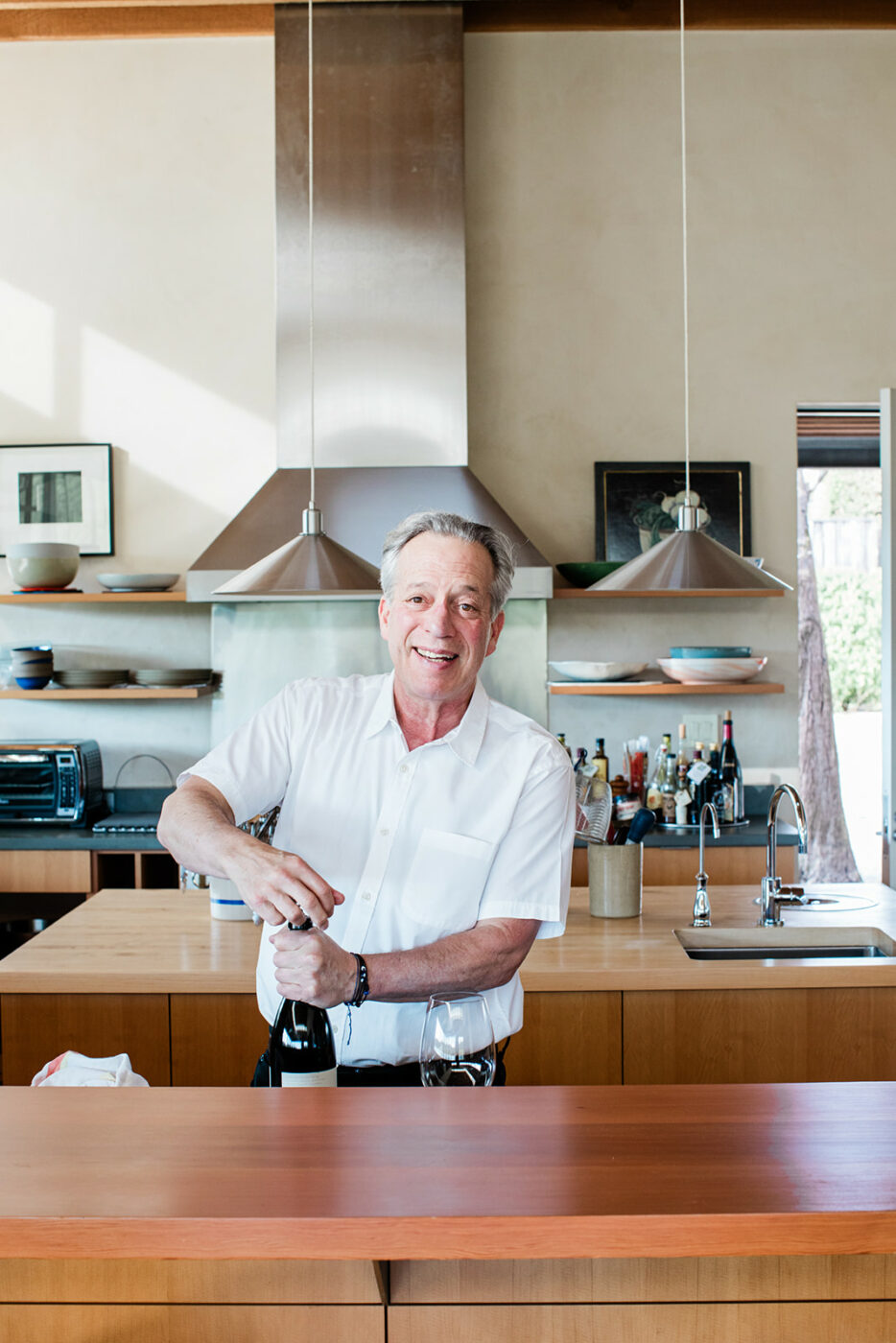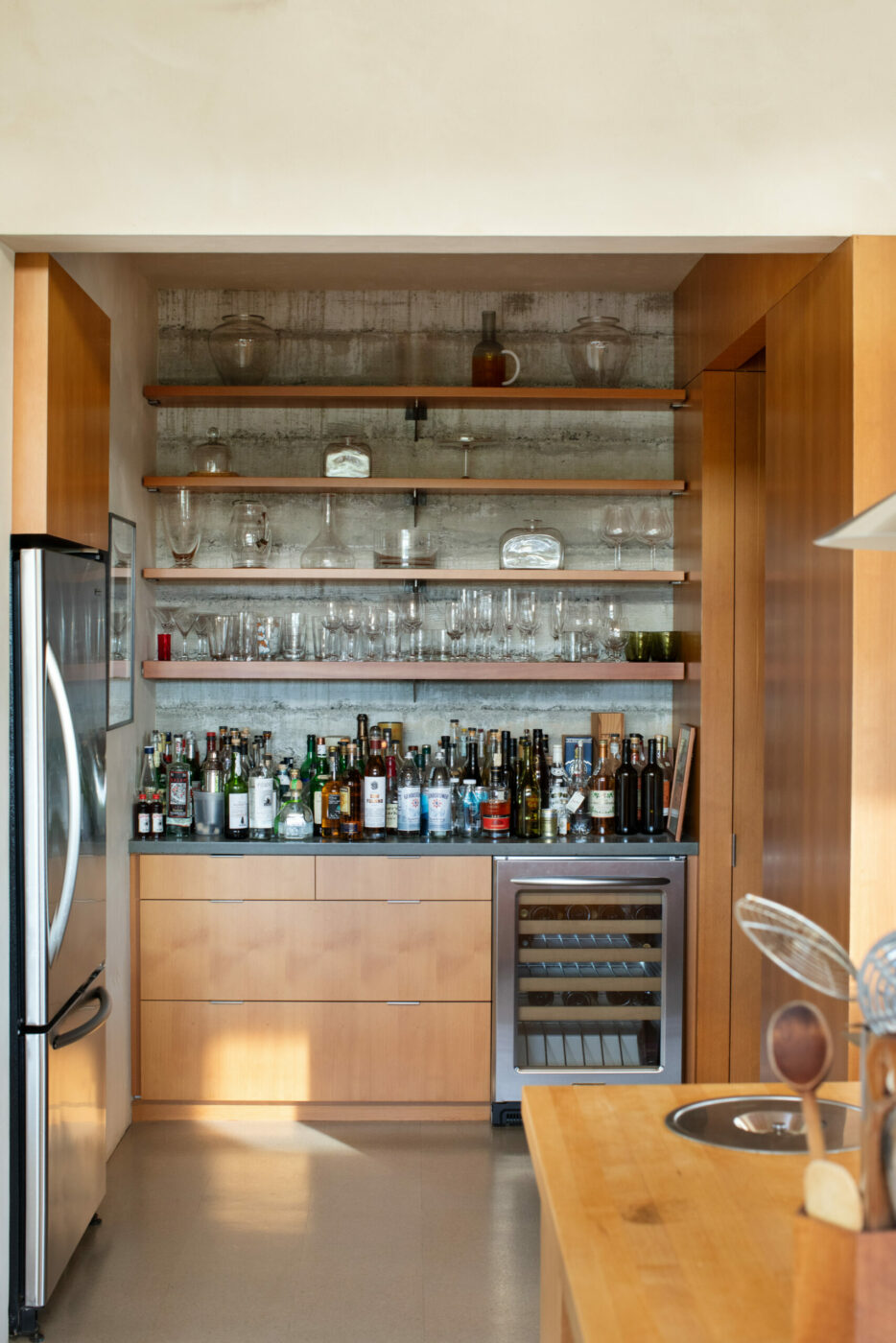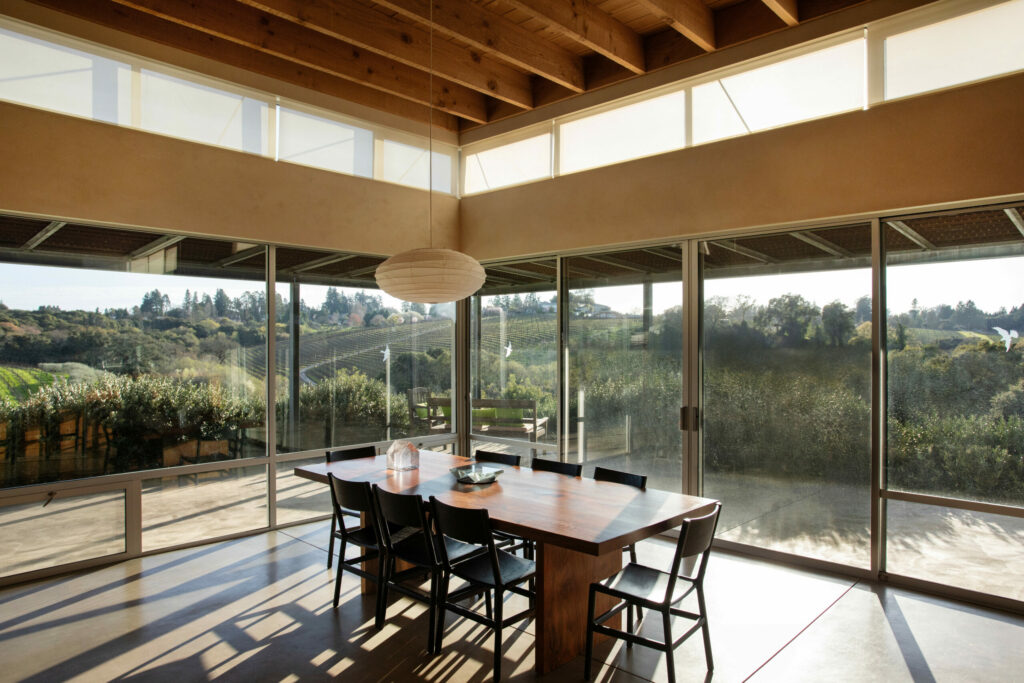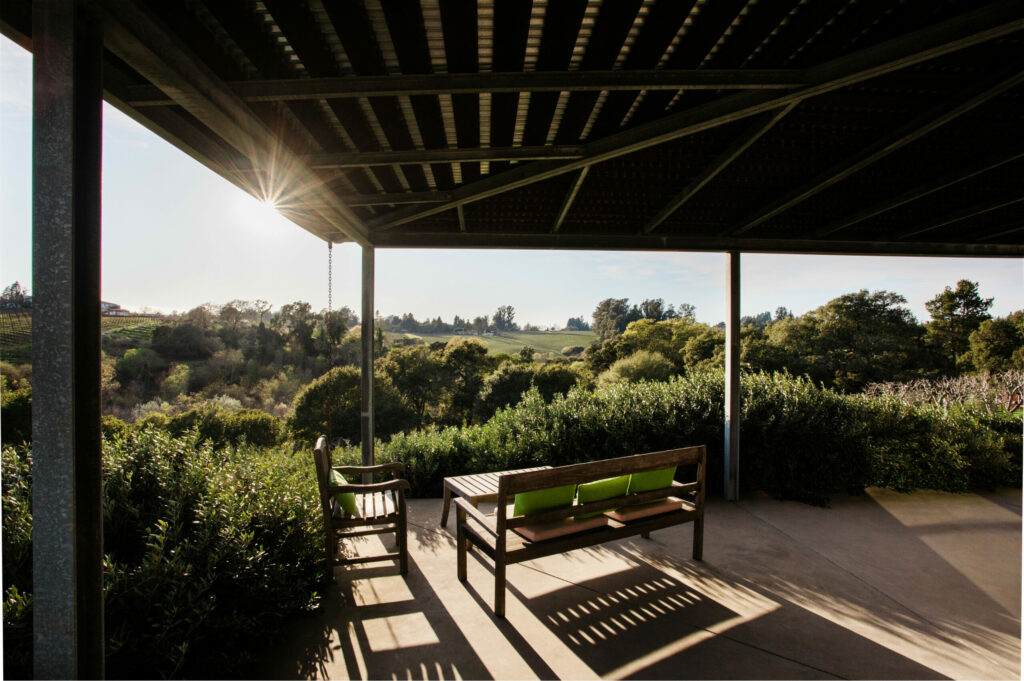There’s a tiny sparrow fluttering and dipping its wings in a small pool of water collected at the edge of the roof that cantilevers over Stephen Singer’s porch in rural Sebastopol. It’s a moment that would have thrilled his young granddaughter, who has just left after an extended visit to the farm, and Singer looks delighted, too.
The wraparound porch overlooks a sweep of olive groves and vineyards in a small, west-facing valley punctuated with blocks of grapes and olive trees. The landscape is full of life: owls hunt for gophers and nest in boxes placed at the side of the vineyards, and ducks and occasionally river otters cavort in the seasonal stream at the bottom of the hill. “I could sit all day and watch the turkey vultures fly around,” says Singer. “They’re beautiful aviators.”
There are few as well equipped as Singer to hear the songs of all this rural bounty and beauty. A restaurateur and wine merchant, he is known for his connection to Chez Panisse, the Berkeley restaurant founded by his former wife, Alice Waters. Singer oversaw Chez Panisse’s wine program for decades, ran a landmark wine shop in San Francisco, and consulted on wine lists for dozens of restaurants while importing rare olive oils from Tuscany. (Paul Bertolli, a colleague at Chez Panisse in the early 1980s, first opened his eyes to the vibrant, fruity qualities of Tuscan olive oils.)
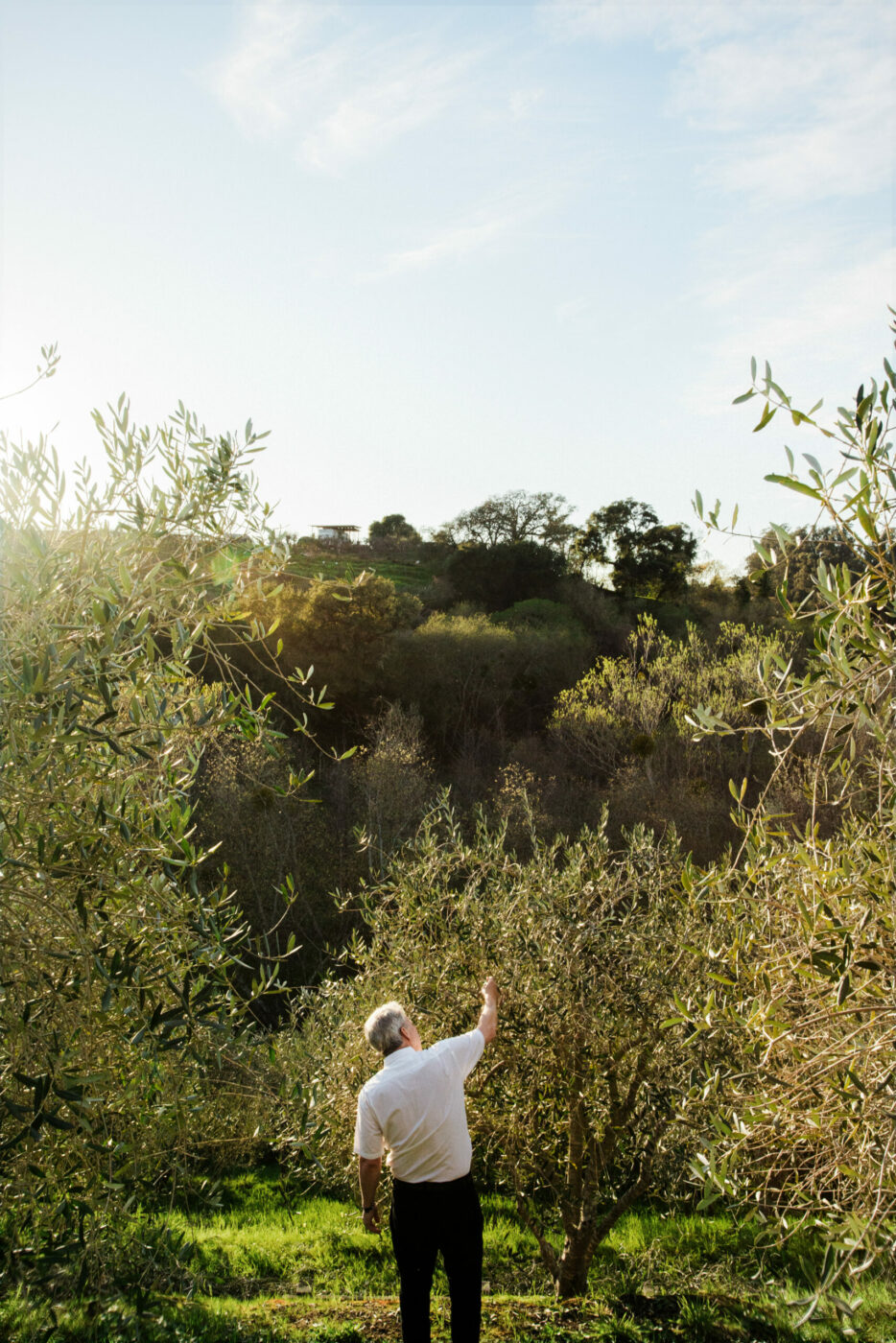
Singer now focuses his formidable energy on products from his Sebastopol farm, including wines from 6 planted acres as well as two blends of estate olive oil — staples of a gracious spread. “Wine on the table pulses with a sense of purpose,” Singer says. “It makes the table a more beautiful place, and it invites conversation and community.”
Singer is also an accomplished visual artist. His studio takes up the second floor of a corrugated metal outbuilding that houses tractors and field equipment on the ground floor and an acetaia, or vinegar-making operation, above. Singer paints with watercolors, layering dozens of thin washes of color atop the page to explore formal issues of light, space and form. He explains that while he doesn’t paint from nature per se, his work is saturated with reflections of light and color in the landscape.
The labels he created for his estate Syrah and Viognier engage with this interplay: the Syrah has a subtle design in keeping with its dark, complex character, but the Viognier reads exuberant and bright. One imagines the colors on that label in dialog with the character of both the fruit it’s made with and the light, summery foods it might accompany — it’s a “vivid, polychromatic expression,” the artist explains.
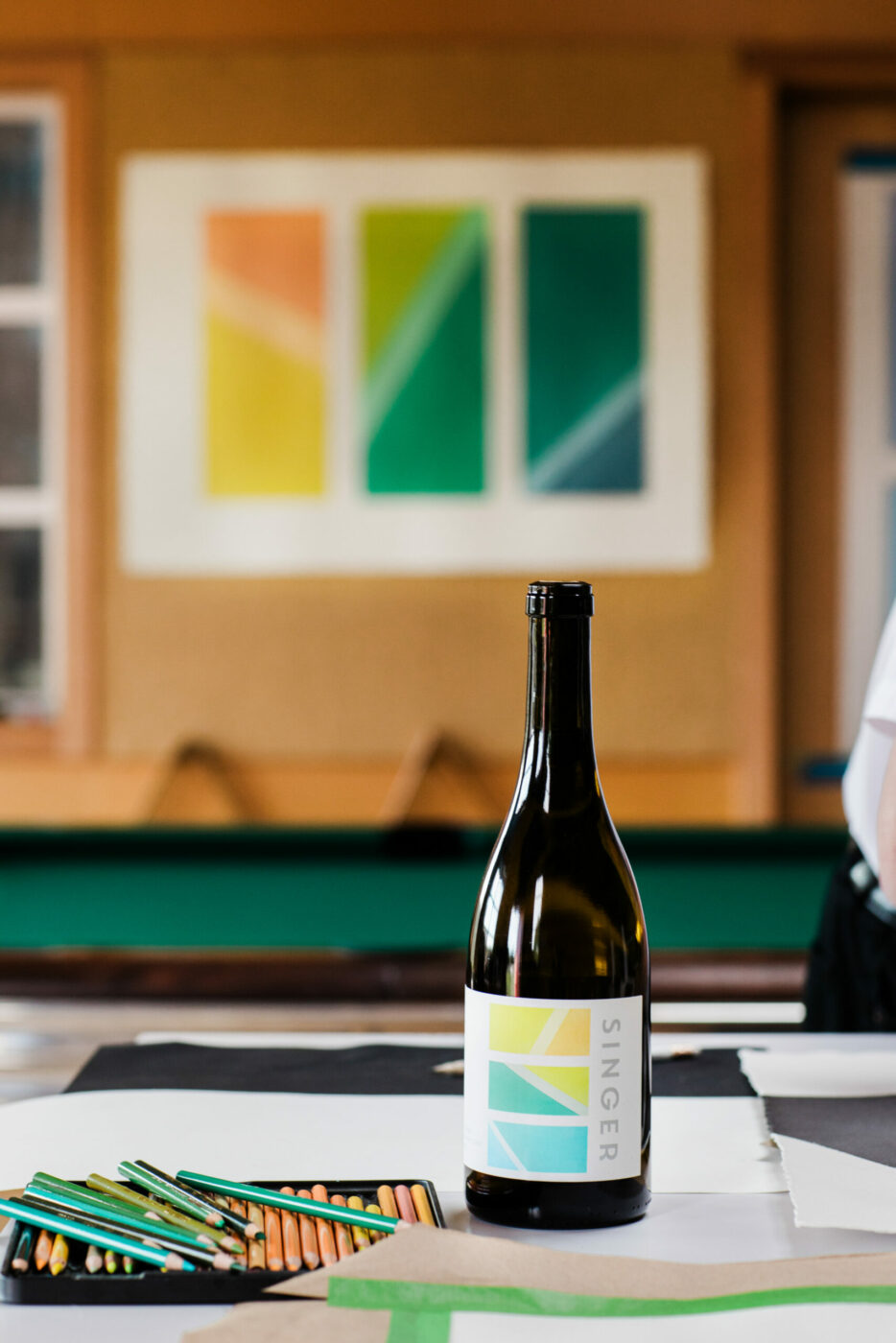
Singer first explored Sonoma County in the 1970s, riding motorcycles and cycling through the hills of west county with friends. When he was ready to make the leap, he became enamored of the idea of raw land, a place where he could realize his own built environment. Singer’s parents had built the house he grew up in, in Oklahoma, and he longed for a spot where he could assert his creativity as they had.
When he purchased the property 23 years ago, it was planted with a few thousand apple trees alongside a couple of simple farm buildings and a doublewide trailer for farmworker housing. With strong ideas for the new home he wanted to build, Singer worked collaboratively with architect Keith Anding to realize the design. The brief was for a modern, light-filled environment that gave the impression of an urban loft, with a similar flow between spaces, but on open land.
“What I really like about hypermodern architecture and design is that it draws you to the experience of the form itself,” Singer says. “As much as the house has a lot of modern elements, it hardly feels severe.”
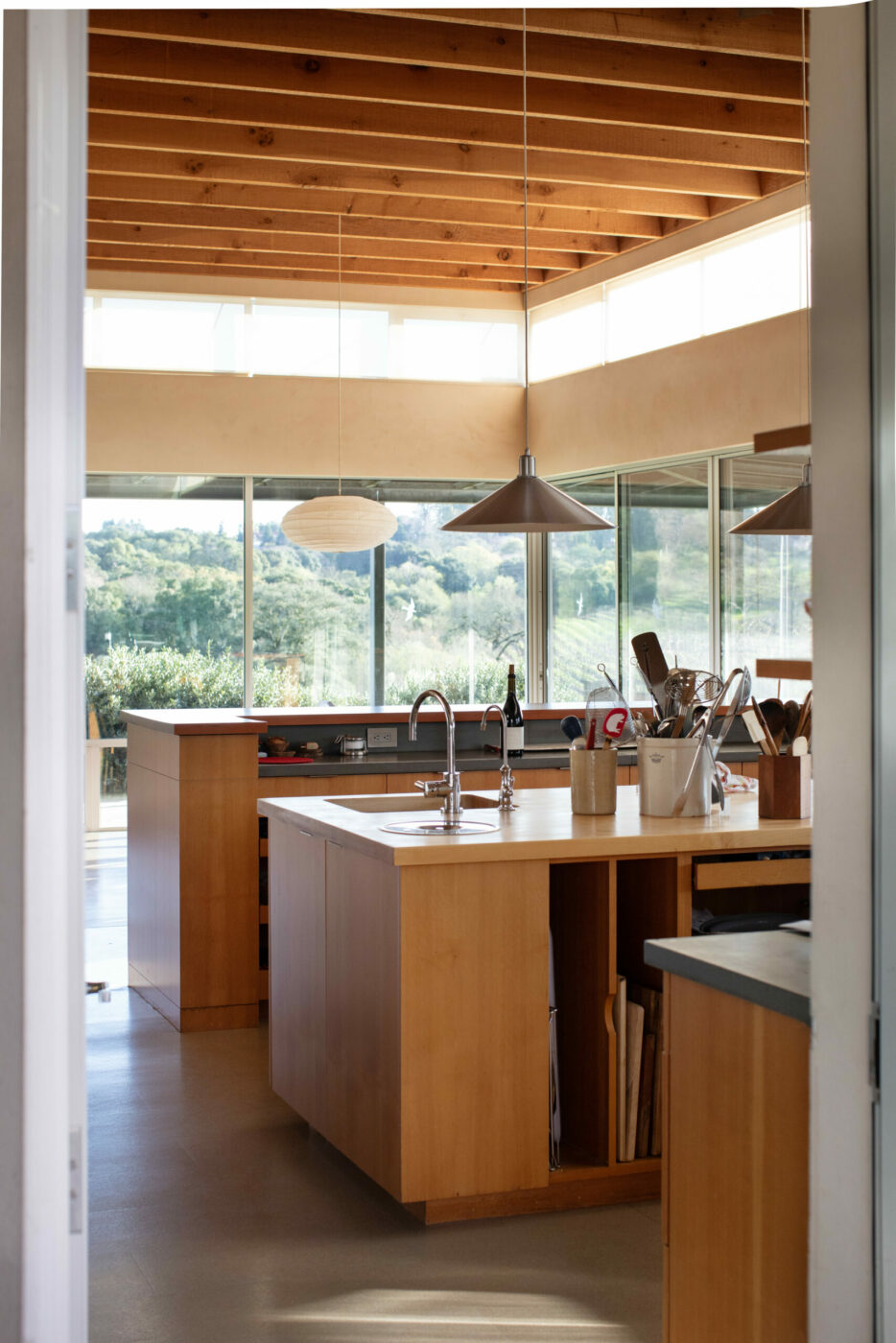
A large space for cooking and conversation centers the design. “In many ways, my house is a large kitchen with some bedrooms around it,” he reflects. The kitchen accommodates large gatherings with multiple chefs around a center island and peninsula that connect to an indoor dining space on one side and an outdoor kitchen on the other. His many years in restaurants informed the functionality.
“One of the things that’s interesting is that people who haven’t spent time in restaurants often think that the optimal efficiency is found in having a lot of space. Well, that’s actually not the case. If the distances are too large, it’s disadvantageous,” he says.
What is important is flow and easy accessibility. Singer uses low trays to corral dozens of favorite oils and vinegars within arm’s reach of the stove, while at the center of the island, ceramic crocks hold wooden spoons, spatulas and tongs. “There’s something about the architecture of my brain — I like to see as many tools and things out on display as possible for efficiency, for remembering what I have to work with.”
The adjacent outdoor kitchen connects through a large door and features an enormous hearth equipped with a Tuscan grill. “Most of the winter weather comes from the south and east, so even if it’s howling rain, this part of the house is protected and I can go outside and grill,” Singer says.
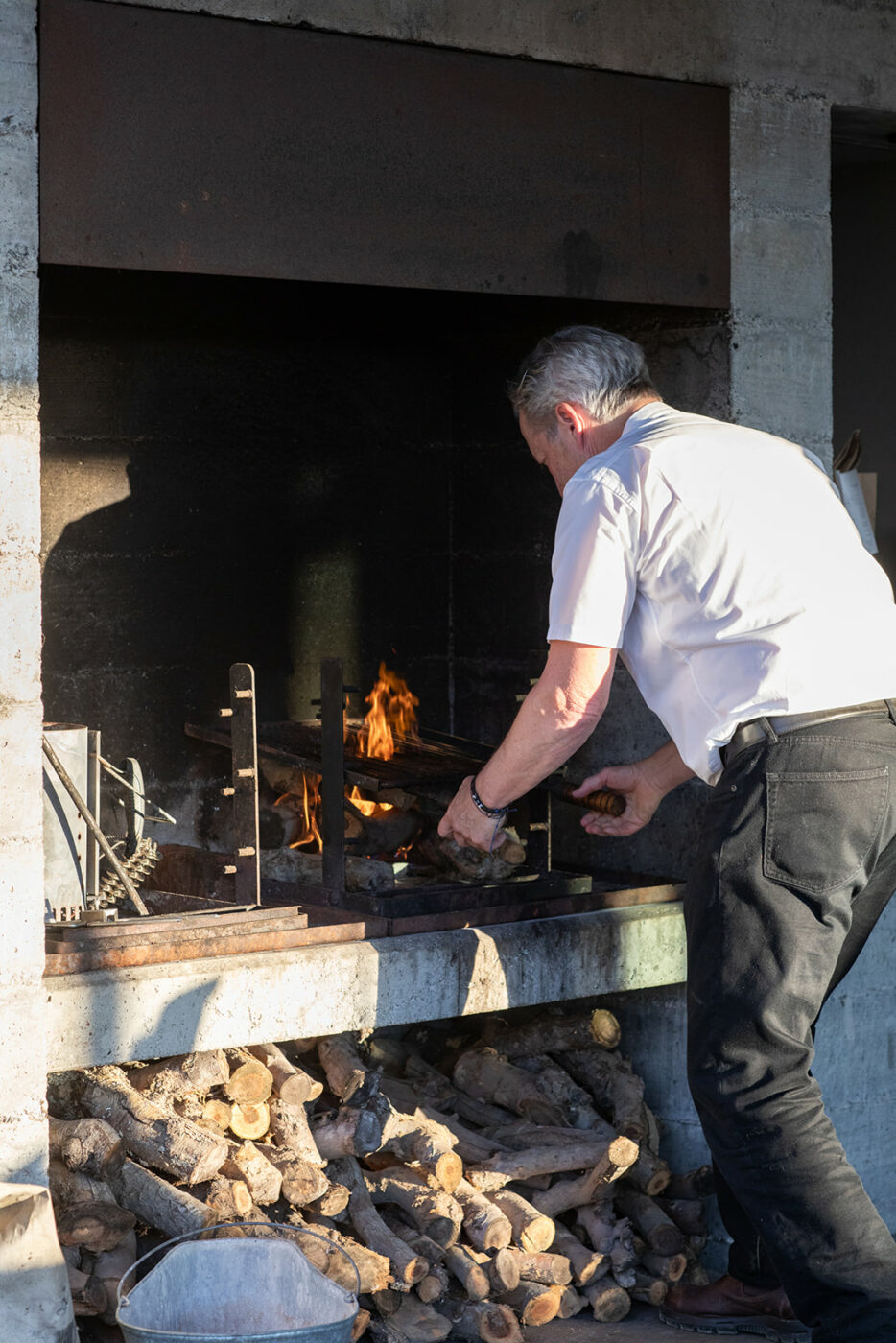
In June, the vineyards and olive groves come alive with the lush energy of the season, a sense of fertility and vitality, Singer says. “It’s a truism of painting that green can take over a painting. So in early summer, when you have all this green like you do here, you can’t keep it out. It feels like a welcoming presence, a waking up of your connection to the outdoors.”
From the porch, he can take in developing clusters on the vines and boysenberries and Santa Rosa plums in the garden. He also often sits on the porch at night to listen to the singing of the frogs in the creek and gaze at the sky. “When it’s moonlit, you can see the vineyards, and when it’s not, you can see the stars,” he says.
Though he has been in the wine business for 44 years and has farmed grapes on this site for two decades, Singer is still realizing new chapters in his relationship to wine. He recently relaunched under a new name, Singer Wine, and is focusing on smaller, high-quality releases. Learning to farm this land has been an introduction to a whole new canon of knowledge, he says, as he absorbed the character of the site and began to fully realize its promise.
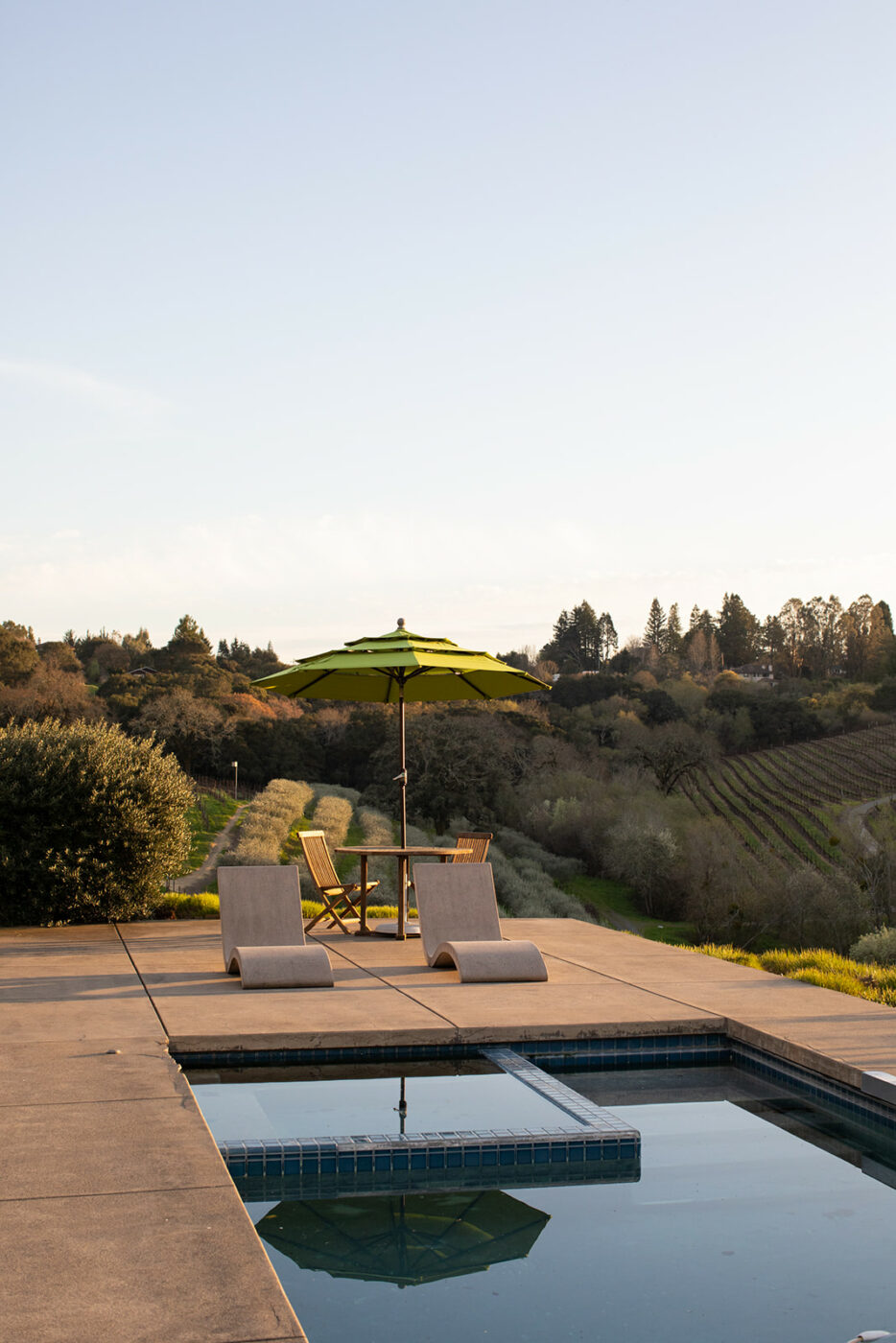
“One of the things that farming — especially organized, sustainable farming, where you’re not bluntly trying to impose your will — is you have to learn the systems. Not just how to accommodate them, but how to work within them. It’s another way of saying that it’s about trying to find a certain highly functional state of equilibrium. And that means also recognizing a system of balance and a relationship to all the other animals.”
“Having the opportunity to recognize all these different creatures — ducks, river otters, turkey, deer. It’s really fun to feel that we get to share this neighborhood.”


